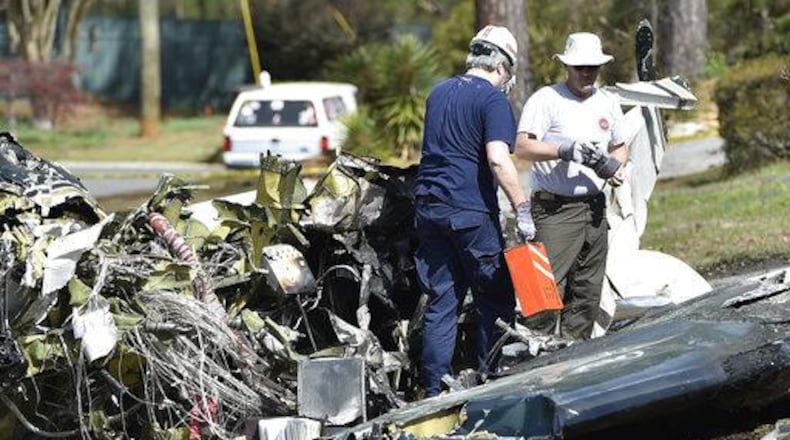An Atlanta man killed after crashing into a Marietta home lacked the necessary training and struggled to fly without the help of his autopilot, a National Transportation Safety Board investigation revealed.
Robert George Westlake, 78, was killed in March 2017 after losing control of his twin-engine Cessna and crashing into a home on Vistawood Drive.
The 1976 aircraft was headed to Fulton County Airport from Cincinnati, Ohio, police said at the time.
RELATED: Pilot identified after deadly Cobb County plane crash
On Thursday, a crash report released by the NTSB revealed Westlake relied heavily on the jet's autopilot function and lacked the necessary training to operate the plane alone.
Investigators described Westlake’s final flight as “uneventful” until an air traffic controller instructed him to change his flight plan. The new route required Westlake to manually enter the new information into his GPS, according to the NTSB report.
“A few minutes later, the pilot told the controller that he was having problems with the GPS,” investigators wrote.
Westlake asked for a direct route to the airport and was told to lower his altitude from 22,000 feet to 6,000 feet. That’s when the pilot reported that he was having trouble steering the aircraft. He dropped below 4,000 feet before telling the air traffic controller he had issues with his GPS and was “barely able to keep the airplane straight and its wings level,” according to the report.
Witnesses reported seeing the plane roll a complete 360 degrees to the left before inverting and crashing into the yard nose first. Both the plane and the house caught fire as a result, authorities said.
Luckily, the couple who lived there were attending a fish fry at their church at the time.
MORE: Thanks to Lent, Georgia couple at fish fry when home burned
The pilot’s logbooks were not available during the NTSB investigation, so aviation officials were unable to determine Westlake’s flight experience.
Flying the Cessna Citation I alone requires an approved single-pilot exemption and an annual training course, but investigators said there was no record that Westlake received the necessary training to fly the plane alone.
A friend of Westlake’s said he tried to teach him to use the plane’s GPS, but that the pilot “generally was confused about how the unit operated.” He also said he flew with the 78-year-old several times, and noticed Westlake depended heavily on the plane’s autopilot function, which was integrated into the GPS system, according to the report.
“The friend added that the pilot was ‘constantly complaining’ that the airplane was ‘uncontrollable,’” the report states.
Westlake’s friend said the pilot would typically activate the autopilot immediately after takeoff and turn it off just before landing. He even warned the pilot that he might struggle if an air traffic controller ever amended his pre-programmed flight plan.
A post-crash inspection of the plane revealed no evidence of abnormalities with the autopilot system, and investigators determined Westlake’s difficulty flying the plane manually likely led to an aerodynamic stall and subsequent crash.
About the Author
Keep Reading
The Latest
Featured



